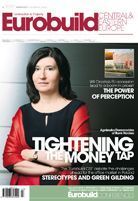The company first came to Poland, specifically to Wrocław, more than twenty years ago to buy cheaper building materials than in Western Europe. Later it developed the Bema Plaza office complex in the city, and this year is planning to launch another project there: Synergy Business Park. This is only a fraction of what Ghelamco Poland has achieved in Poland so far, and over the years it has grown into one of the largest developers of office space in the country. The company has also entered Ukraine and Russia, where - according to the president of Ghelamco Group, Paul Gheysens - it is about to strengthen its presence in the retail sector. In this exclusive interview, the forever youthful president reveals more about the company's plans and about his passion for Arabian horses
Ewa Andrzejewska, 'Eurobuild Central & Eastern Europe': This year Ghelamco is now celebrating 20 years of activity on the Polish market. What was the reason for expanding beyond Belgium in the first place and






























































